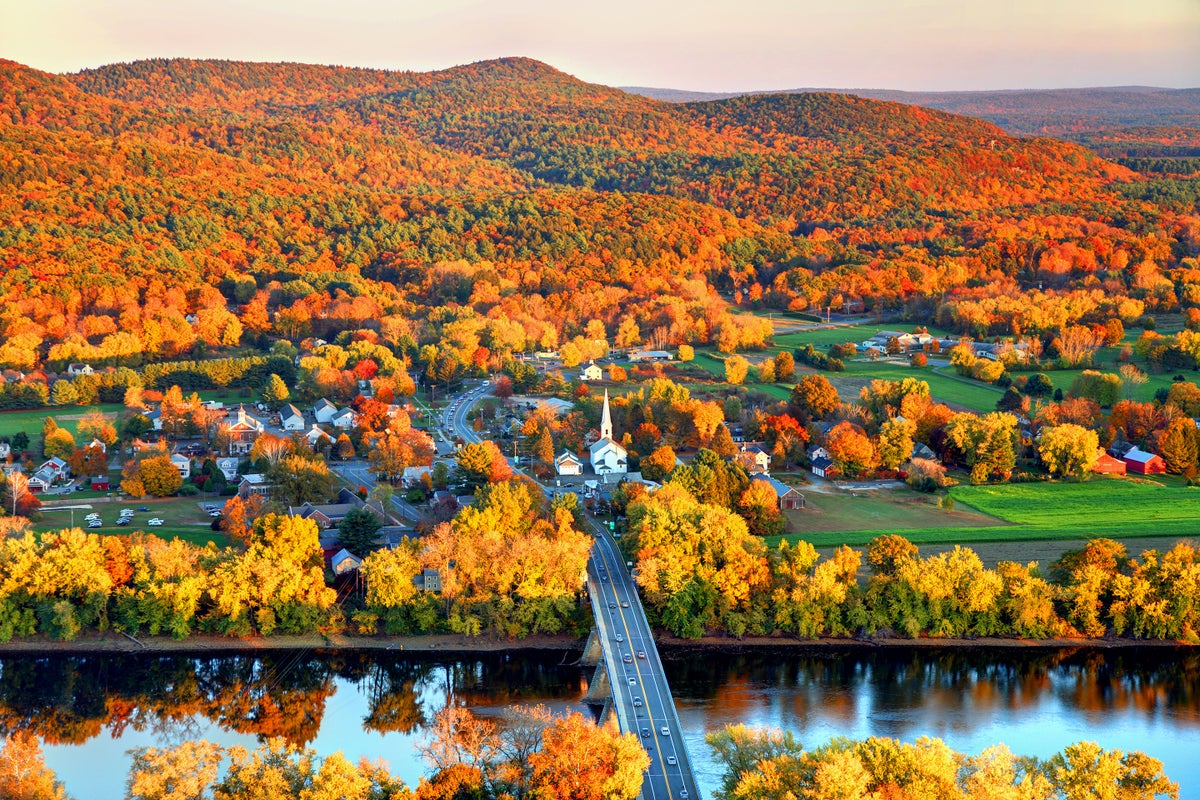When Will the Leaves Turn? This Is How Scientists Find Peak Fall Colors
If you want to know where the best leaf peeping will be this year, climate science and weather can provide the answer
Evan Fisher first fell in love with the changing colors of fall while looking at an old maple tree in the backyard of his childhood home in North Carolina. A decade later the meteorologist and geospatial analyst set out to use his professional skills to predict where he could find the most striking reds, oranges, yellows and purples each year.
Together with a college friend, Fisher began using data on temperature, daylight hours and precipitation to build a machine-learning model that could forecast where the first signs of autumn would appear and when the colors would reach their peak throughout the country. In 2023 the team launched Explore Fall, a public platform that is able to predict fall foliage progression across the continental U.S.
Fisher and other experts agree that autumn foliage is arriving early this year. Yellow, orange and reddish leaves can already be seen in the Northeast, the Northwest and some central portions of the country. Peak colors are gradually spilling out from New England and the higher elevations of the Rockies into lower elevations and areas closer to the coast. According to a seasonal forecast from AccuWeather, the best fall foliage in 2025 is expected in New England, the Colorado Rockies, the Plains and the Midwest, whereas regions such as the Appalachians and Pacific Northwest may see duller color or early leaf drop.
If you’re enjoying this article, consider supporting our award-winning journalism by subscribing. By purchasing a subscription you are helping to ensure the future of impactful stories about the discoveries and ideas shaping our world today.
The arrival of autumn isn’t just a matter of natural beauty—and billions of dollars in tourism—it also gives scientists a chance to study the health of trees and forests, including how climate change affects the aging of leaves, known as senescence.
During autumn, three main factors—day length, temperature and rainfall—influence when the leaves of various tree species change color, how long that takes and how vibrant the colors are. Reduced sunlight, for example, slows photosynthesis, which reorganizes leaf pigments and causes them to change color. Lower temperatures allow plants to begin shutting down. Rainfall during the summer increases soil moisture, making leaves more vibrant when autumn arrives, whereas summer drought can mean dull foliage.
Each tree species responds differently to these factors. Maple leaves, for instance, get their vivid reds and deep purples from anthocyanins, pigments that form when sugars accumulate after growth stops in fall. Cool nights trap these sugars, enhancing color, whereas warm nights deplete them, causing anthocyanins to fade and the leaves to lose their characteristic autumn brilliance.Meanwhile research has shown that warmer conditions delay leaf fall in oak and beech, whereas other studies find the opposite is true in birch and poplar.
This year drought and low soil moisture will shorten and dull peak foliage in parts of the Northeast and around the southern Great Lakes and Ohio Valley, according to AccuWeather. Across the West, severe drought will trigger early, less vivid foliage.
The Explore Fall team trained its model to capture these patterns, using deep learning to process decades of data on temperature, daylight and rainfall. The system classifies regions into categories ranging from “Little to No Color” to “Peak Color” and can adjust predictions with satellite observations. Fisher says the model can predict the peak to within an accuracy of three days about 80 percent of the time.“Their map looks really cool,” Crimmins says.
Although leaf color change has remained stable over the past two years, data going further back in time show that peak color has been arriving earlier than before, which may be “a sign of what is still to come,” Fisher says.
Research bears this observation out: A 2023 study that used satellite data, ground observations, measurements of atmospheric carbon and controlled experiments to separate the roles of temperature, photosynthesis and day length found that warming before the summer solstice tends to make senescence start earlier. On the other hand, warming after the solstice slows it down, extending the colorful season.
Though a longer period of senescence might sound exciting for autumn enthusiasts, the downside is that leaves have less time to photosynthesize. “As soon as leaves lose their green color in autumn, they switch to producing CO2, and if that period gets longer, that can be a problem,” because it contributes to global warming, says ecologist Constantin Zohner of the Swiss Federal Institute of Technology Zurich, who co-authored the 2023 paper.
If you enjoyed this article, I’d like to ask for your support. Scientific American has served as an advocate for science and industry for 180 years, and right now may be the most critical moment in that two-century history.
I’ve been a Scientific American subscriber since I was 12 years old, and it helped shape the way I look at the world. SciAm always educates and delights me, and inspires a sense of awe for our vast, beautiful universe. I hope it does that for you, too.
If you , you help ensure that our coverage is centered on meaningful research and discovery; that we have the resources to report on the decisions that threaten labs across the U.S.; and that we support both budding and working scientists at a time when the value of science itself too often goes unrecognized.
In return, you get essential news, captivating podcasts, brilliant infographics, , must-watch videos, challenging games, and the science world’s best writing and reporting. You can even gift someone a subscription.
There has never been a more important time for us to stand up and show why science matters. I hope you’ll support us in that mission.
Thank you,
David M. Ewalt, Editor in Chief, Scientific American
Source: www.scientificamerican.com
